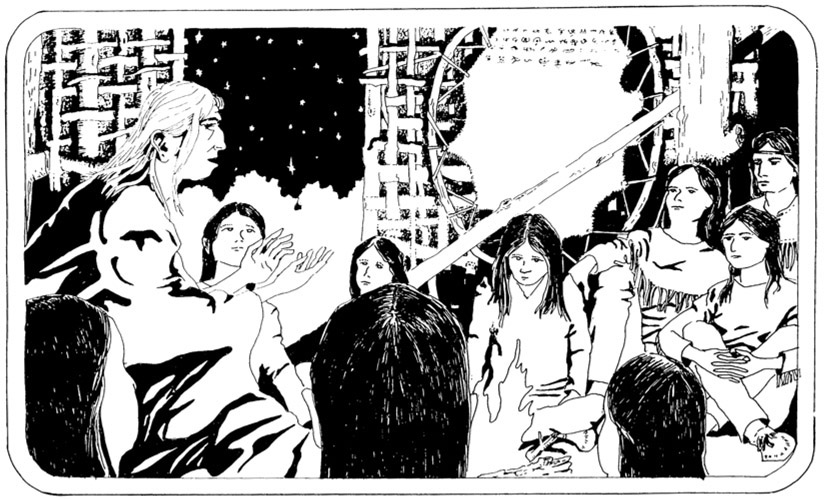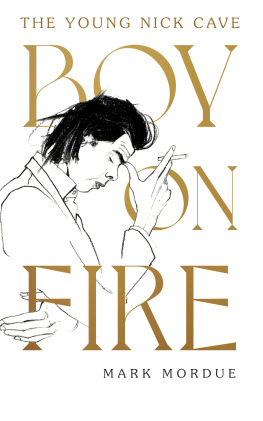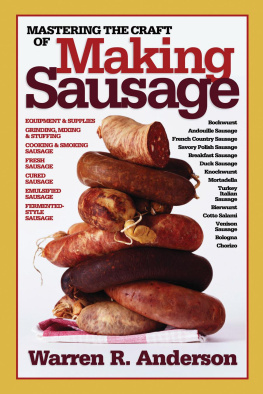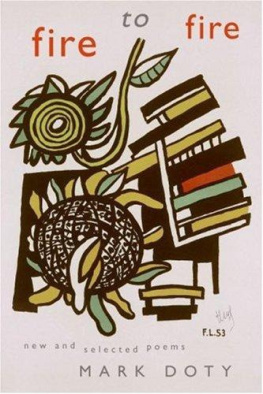Mark Warren - Fire-Making, Storytelling, and Ceremony
Here you can read online Mark Warren - Fire-Making, Storytelling, and Ceremony full text of the book (entire story) in english for free. Download pdf and epub, get meaning, cover and reviews about this ebook. year: 2019, publisher: Lyons Press, genre: Home and family. Description of the work, (preface) as well as reviews are available. Best literature library LitArk.com created for fans of good reading and offers a wide selection of genres:
Romance novel
Science fiction
Adventure
Detective
Science
History
Home and family
Prose
Art
Politics
Computer
Non-fiction
Religion
Business
Children
Humor
Choose a favorite category and find really read worthwhile books. Enjoy immersion in the world of imagination, feel the emotions of the characters or learn something new for yourself, make an fascinating discovery.

- Book:Fire-Making, Storytelling, and Ceremony
- Author:
- Publisher:Lyons Press
- Genre:
- Year:2019
- Rating:3 / 5
- Favourites:Add to favourites
- Your mark:
- 60
- 1
- 2
- 3
- 4
- 5
Fire-Making, Storytelling, and Ceremony: summary, description and annotation
We offer to read an annotation, description, summary or preface (depends on what the author of the book "Fire-Making, Storytelling, and Ceremony" wrote himself). If you haven't found the necessary information about the book — write in the comments, we will try to find it.
Fire-Making, Storytelling, and Ceremony — read online for free the complete book (whole text) full work
Below is the text of the book, divided by pages. System saving the place of the last page read, allows you to conveniently read the book "Fire-Making, Storytelling, and Ceremony" online for free, without having to search again every time where you left off. Put a bookmark, and you can go to the page where you finished reading at any time.
Font size:
Interval:
Bookmark:
As it was once phrased within some native mythologies, certain trees swallowed fire in the olden days. These words might seem to evoke a fabulous image, like a lightning bolt searing into wood, but this swallowing process was not so dramatic an affair. It was silent and invisible, however, no less profound. It was done on a second-by-second basis during the daylight hours. We now call the phenomenon photosynthesis.
I suspect thaton an instinctive level to which we are not privy todaythe people of earlier times innately understood the fundamental role of green plants in capturing the suns energy. That understanding might explainat least in partwhy the Cherokee in my area once paid tribute to plants through ritual, prayer, and gift-giving. Among the many utilitarian uses of plants was knowing how to recapture some of that soaked-up solar energy for the purpose of producing a flame. But which species of trees provided the best material?
The answer to that question may have been obvious to native tribes, who lived their lives so integrated with the natural world. Any Cherokee child probably could have cited a list of good fire-making wood. In my lifetime that special cadre of trees had to be discovered through trial-and-error experiments.
Of course, all trees experience photosynthesis, and all will release their stored solar energy when burned as fuel. But only select trees will deliver up a flame from the heat of human-made friction, and they will surrender that fire only to the hands of one who knows the proper technique for releasing it.
Revisiting this ancient skill is like rounding the curve of a historic circle, one that can enrich us by the reconnection to history alone. The special value of fire-making is not solely in producing a flame. It is reentering the forest in a frame of mind that sees the natural world as the real world. It is reassessing the forest, elevating it from the scenic but prosaic backdrop of our days to a vibrant and living storehouse brimming with the essential gifts of life.
To create fire by friction you will be collecting select dead wood for a fire-kit. Remember, not just any tree will do. The density, texture, porosity, grain, resin retention, and hardness (or softness) of some species of wood preclude the feasibilityif not the possibilityof creating fire by friction. The limiting factor is human strength.
Even the most problematic woods might be used successfully to create fire with the aid of high-speed machinery. As an example, I have, on occasion, inadvertently created fire in sawdust with a chainsaw while sectioning a dead scarlet oak, a tree generally considered (by practitioners of woods-lore) not to have swallowed fire.
Likewise, certain plants offer fine material of leaf, bark, pith, wood fiber, or seed down that can be worked into tinder (the combustible material that can easily burst into flame), while others do not. As in all the survival skills, a fire-maker who has invested time in plant study has a distinct advantage over someone who approaches the skill as a sporting event isolated from Nature. (Botany, in my opinion, is the foundation of virtually every survival course I teach... even tracking, archery, and stalking.)
In this book we will dive headlong into the adventure of accumulating these botanical details, understanding the relationship between plants and fire, and mastering the ancient techniques of drawing a flame from dead wood.
There is a swell of satisfaction that fills a student of survival skills at every milestone of his journey: to sink his teeth into the surprising taste of a plant that he has positively identified for food-harvest... to creep within a few yards of a deer or turkey or squirrel to observe its habits... to curl up under a dry, self-made, primitive shelter as winter rain hammers the earth all around. Each accomplishment feels monumental. But creating fire is special.
Producing a flame makes a seismic shift deep in the soul of the fire-maker. To walk into a forest knowing that you can produce a flame with your bare hands using the simple materials of the woods (and knowing that this flame will take care of so many of your needs) engenders an indigenous pride of self-sufficiency and self-esteem. A successful fire-creator belongs to a larger picture of life on Earthone that includes a more intimate connection to the past, a more pragmatic immersion into the present, and a more hopeful confidence in the future. Such a fire-maker, past or present, touches the heart of the Earth and feels its heat.
The Standing Peopleas the Cherokees called the treesdo literally swallow fire. When we create a flame from grating two pieces of wood together, we release that celestial energy. We are like apprentices to the Maker of All Things, understudy-authors of a pyretic genesis, creating a tiny sun of our own... that is, a bright ember. We feed it, use it, and then, at the end of the day, sit back and gaze into its mystery.
What are these orange, yellow, blue, and sometimes copper-green flames that dance and twist so fluidly, embrace us with warmth, cook our food, temper our tools, and shed light upon the moment? A fire is the hearth of the world. Wherever you happen to be as you sit before your self-made flames, you have come home.
It is no wonder that firethe ever-changing plasma, dancing and mesmerizing by its natural illuminating powerserved as the canvas upon which ancient people painted the picture of a story being told to them. In the presence of a campfire and a storyteller, people today still fix their eyes on the flames. This is probably a replication of the way it has always been done.
Whether the details are manufactured by the skilled tongue of the raconteur or the inventive canvas of the listeners fertile mind, it is the listener who ultimately paints the picture. Thats what sets it apart from modern media, where every visual and auditory detail is force-fed into the eyes and ears of its audience.

A beloved educator whom I know holds weekly visits at a school where he simply tells a story. Whenever he begins his story, he is always aware that a change comes over his audiencean indefinable but complete shift of loyalty to a spoken tale. He sees the students engage his words with an abstract tenacity. They change gears from their busy chattering to enter a mode of complete allegiance to his voice. He cant explain it, but each time the story begins to unfold he knows that he is reaching a place inside his audience that was, just seconds earlier, untapped.
A story is a powerful occasion. Few nonexperiential events can top it as a permanent fixture of memory. What a paradox this is. Listening to a story appears to be a passive exercise. It would seem the antithesis of hands-on education, but there is a whirlwind of activity inside the listeners mind during the telling of a story. Unlike the experience of watching a story on a TV, movie, or computer screen, hearing a story told requires an interaction between words and listener. Every person within earshot of the narrative automatically begins constructing a mental image. In this way both teller and listener play an active role in the composition.
Though the storyteller does not ask the listener to produce a picture, still it happens. Inside the listeners mind a creative storm begins to stir up colors and voices, scents and facial expressions. A mental set of scenery is erected. A month of adventures can be lived in a matter of minutes. To the involved listener, the manufactured image is vivid... remarkably so for a thing unseen.
I am always impressed with the remembrances of my former young campers when they come back as adults to visit. They might not recall exactly how an activity or game worked, but their recall of details about a story is usually flawless.
Font size:
Interval:
Bookmark:
Similar books «Fire-Making, Storytelling, and Ceremony»
Look at similar books to Fire-Making, Storytelling, and Ceremony. We have selected literature similar in name and meaning in the hope of providing readers with more options to find new, interesting, not yet read works.
Discussion, reviews of the book Fire-Making, Storytelling, and Ceremony and just readers' own opinions. Leave your comments, write what you think about the work, its meaning or the main characters. Specify what exactly you liked and what you didn't like, and why you think so.









